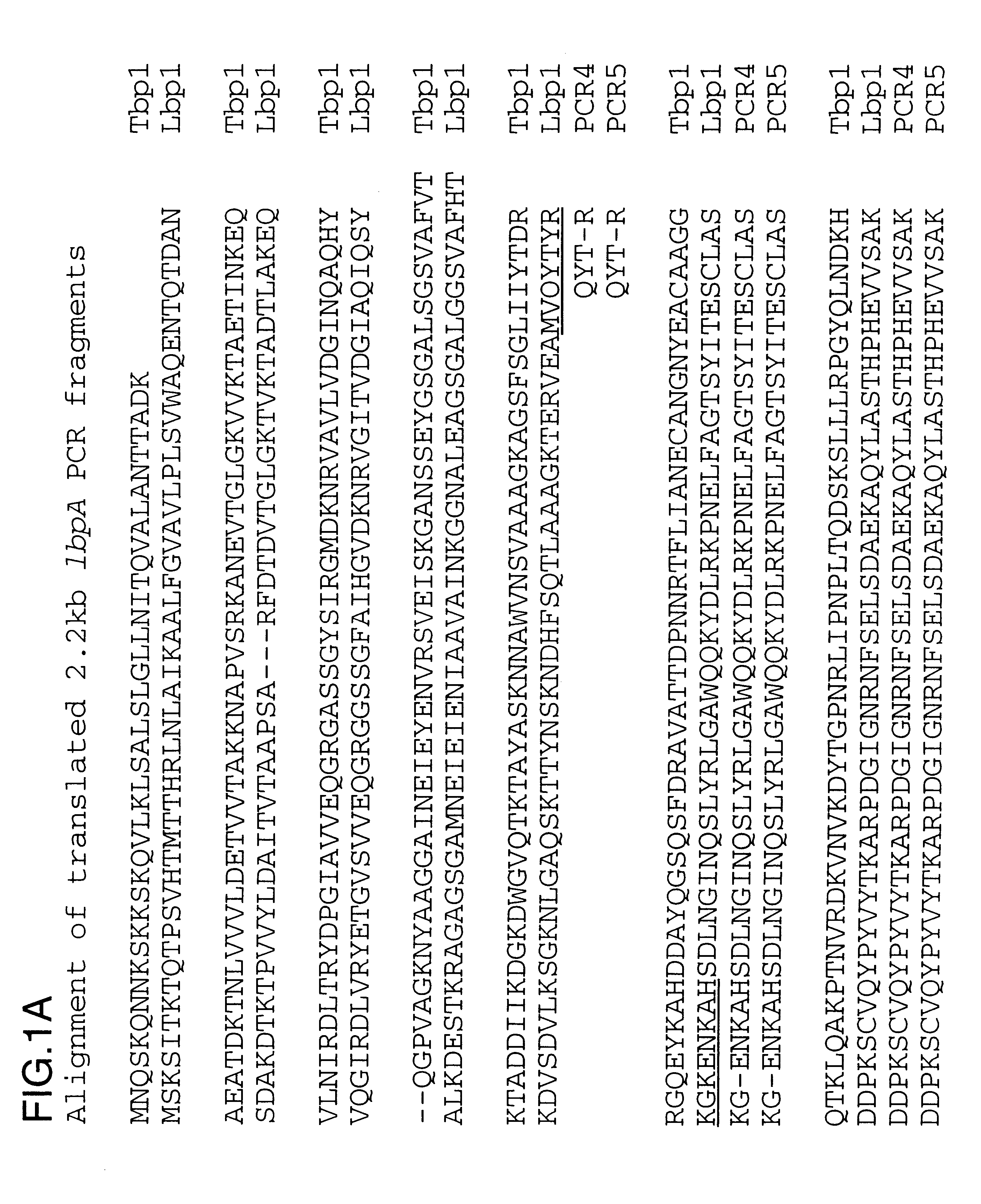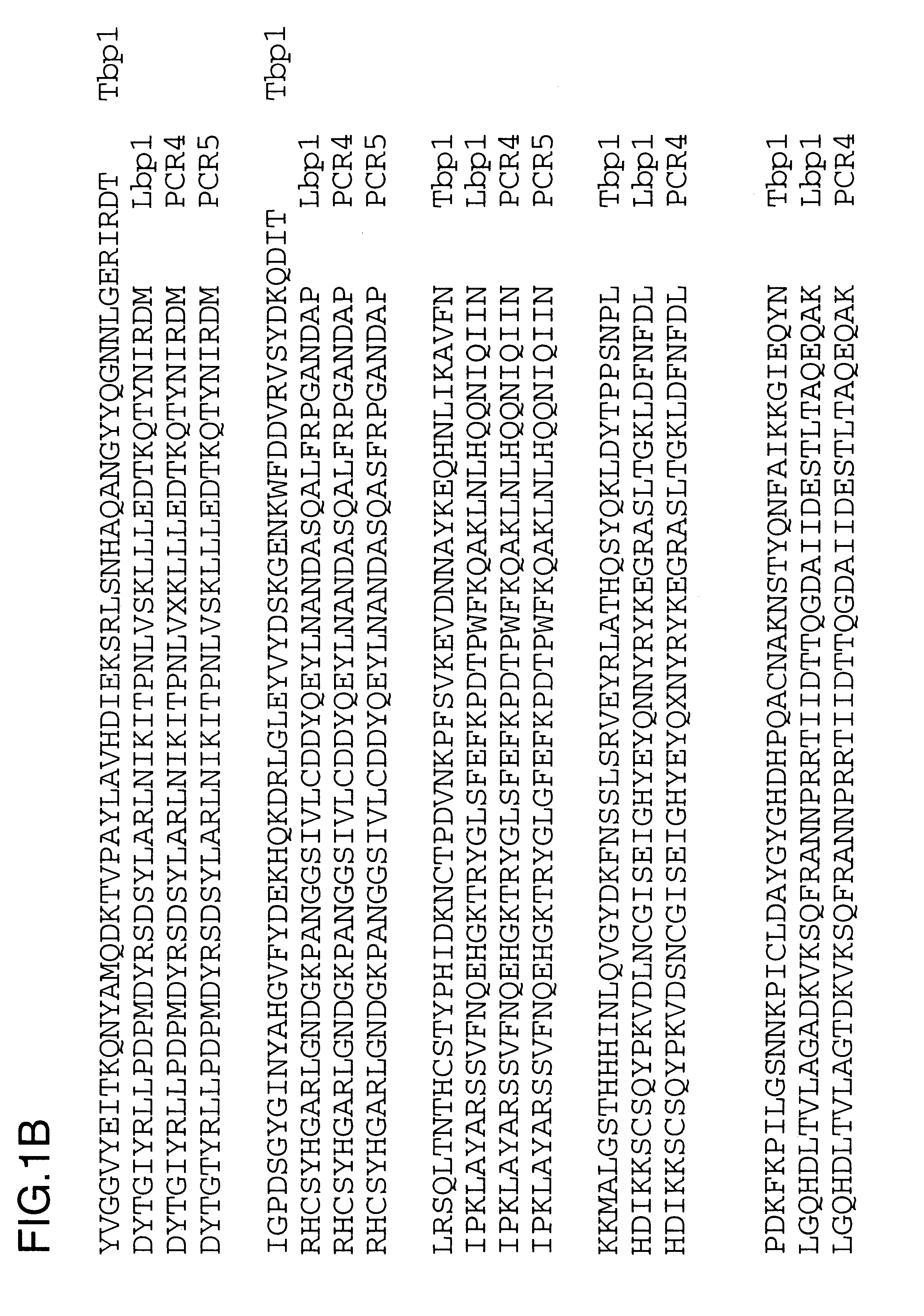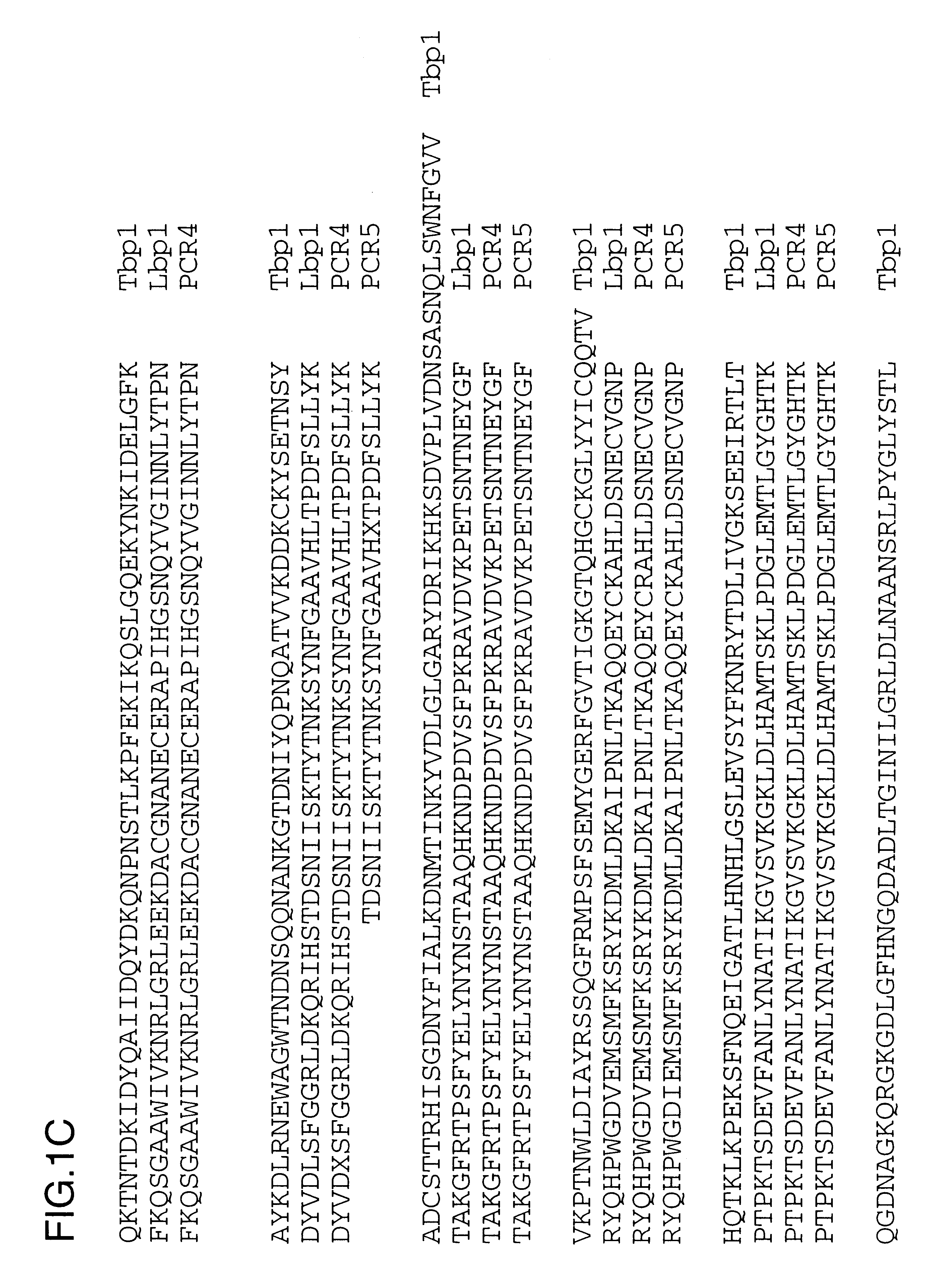Lactoferrin receptor genes of Moraxella
a technology of lactoferrin receptor and moraxella, which is applied in the direction of transferrins, bacterial antigen ingredients, peptide sources, etc., can solve the problems of unlicensed human or veterinary vaccine use, unsuitable for human use, and serious diseases, so as to enhance the immunogenicity of an antigen, slow and sustained release of antigens, and improve immunogenicity. the effect of significantly improving the immunity
- Summary
- Abstract
- Description
- Claims
- Application Information
AI Technical Summary
Benefits of technology
Problems solved by technology
Method used
Image
Examples
example
The above disclosure generally describes the present invention. A more complete understanding can be obtained by reference to the following specific Examples. These Examples are described solely for purposes of illustration and are not intended to limit the scope of the invention. Changes in form and substitution of equivalents are contemplated as circumstances may suggest or render expedient. Although specific terms have been employed herein, such terms are intended in a descriptive sense and not for purposes of limitations. The Y.sup.6 and K.sup.10 residues were omitted from the sequence analysis report for the N-terminal sequence and the oligonucleotides used to PCR amplify the 2.2 kb fragment were incorrect, but nevertheless were successful.
There is a conserved C-terminal pentapeptide found in all known Lbp1 and Tbp1 protein sequences: LEMKF (SEQ ID No. 26). An oligonucleotide primer (4572.RD) was prepared based upon the complementary DNA sequence encoding this pentapeptide:
example 2
This Example illustrates the preparation of chromosomal DNA from M. catarrhalis strains 4223 and Q8.
M. catarrhalis isolate 4223 was inoculated into 100 ml of BHI broth, and incubated for 18 hr at 37.degree. C. with shaking. The cells were harvested by centrifugation at 10,000.times.g for 20 min. The pellet was used for extraction of M. catarrhalis 4223 chromosomal DNA.
The cell pellet was resuspended in 20 ml of 1.0 MM Tris-HCl (pH 7.5)-1.0 mM EDTA (TE). Pronase and SDS were added to final concentrations of 500 .mu.g / ml and 1.0%, respectively, and the suspension was incubated at 37.degree. C. for 2 hr. After several sequential extractions with phenol, phenol:chloroform (1:1), and chloroform:isoamyl alcohol (24:1), the aqueous extract was dialysed, at 4.degree. C., against 1.0 M NaCl for 4 hr, and against TE (pH 7.5) for a further 48 hr with three buffer changes. Two volumes of ethanol were added to the dialysate, and the DNA was spooled onto a glass rod. The DNA was allowed to air-dr...
example 3
This Example illustrates the PCR amplification of a fragment of M. catarrhalis lbpA and the generation of probes for screening libraries.
PCR amplification was performed on chromosomaL DNA isolated in Example 2 using primers 4393.RD and 4572.RD under the following cycling conditions: 25 cycles of 94.degree. C. for 1 min, 47.degree. C. for 30 sec and 72.degree. C. for 1 min. PCR4 is the amplification of the 4223 lbpA fragment and PCR5 is the amplification of the Q8 lbpA fragment. A specific band of about 2.2 kb was amplified and partial sequence analysis was performed to ensure that the gene product was related to lbpA and was not tbpA. The derived amino acid sequences are shown in FIG. 1 and have been aligned with the complete 4223 Lbp1 sequence to show their placement and the 4223 Tbp1 sequence (USAN 08 / 613,009) to indicate their uniqueness.
The full-length 2.2 kb gene fragment was randomly labeled with .sup.32 P and used to probe genomic libraries.
PUM
| Property | Measurement | Unit |
|---|---|---|
| Fraction | aaaaa | aaaaa |
| Fraction | aaaaa | aaaaa |
| Strain point | aaaaa | aaaaa |
Abstract
Description
Claims
Application Information
 Login to View More
Login to View More - R&D
- Intellectual Property
- Life Sciences
- Materials
- Tech Scout
- Unparalleled Data Quality
- Higher Quality Content
- 60% Fewer Hallucinations
Browse by: Latest US Patents, China's latest patents, Technical Efficacy Thesaurus, Application Domain, Technology Topic, Popular Technical Reports.
© 2025 PatSnap. All rights reserved.Legal|Privacy policy|Modern Slavery Act Transparency Statement|Sitemap|About US| Contact US: help@patsnap.com



